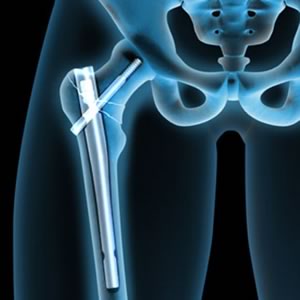OrthoConnecticut offers the most modern, state-of-the art hip and pelvic fracture repair procedures available today. All of surgeries are performed by a team of board certified, fellowship-trained hip specialists. Our highly qualified team of surgeons offers a personalized approach, ensuring that each patient receives the best technique for them. This ensures the best possible surgical outcome. We are especially sensitive in treating older patients.
Hip Fracture
This is a break of the upper part of your femur. The femur is the long bone in your upper leg. At the top of the femur is the “head.” This is the ball that fits into your hip socket. A hip fracture may happen at the “neck” of the femur (the thin portion of bone under the head). Fractures may also happen below the neck.
Causes
Hip fractures can be caused by traumatic injury. Auto accidents and falls are common culprits. Hip fractures are also a problem for elderly people. This is because bones can thin and weaken with age. In some elderly people, the skeleton can become so fragile that a hip can break during normal activity.
Symptoms
A broken hip causes severe pain. It prevents you from being able to put weight on your leg. Your leg may turn outward away from your body. It may appear shorter than your other leg. Your hip may bruise, swell and stiffen.
Treatment
A fractured hip is almost always treated surgically. You may benefit from screws and plates that realign and anchor the broken pieces of your femur. And after your hip is repaired, you will need physical therapy.
Hip Fracture Surgery Options

This surgical procedure uses metal surgical screws to repair a fracture of the femur. This procedure is typically used for patients who have minimal damage to the bone and minimal shifting from the fracture. In this procedure, one or more holes are drilled through the side of the femur and into the femoral head. Surgical screws are inserted into the drilled hole to hold the femoral head in place. A hospital stay of three to five days is necessary, and patients will subsequently receive physical therapy.

This procedure stabilizes severe fractures of the femur with a metal rod and screws implanted into the center of the bone. This system provides great strength while the bone heals. The surgeon creates a channel into the center of the femur. The Gamma Nail is carefully inserted into the femur. The surgeon then creates a second incision on the side of the hip and creates a channel into the neck of the femur. A screw is placed through this channel and through the center of the Gamma Nail, locking it in place. Depending on the nature of the fracture, some patients are allowed to put weight on the leg immediately, while others may not be able to put their full weight on the leg for four to six weeks.
Pelvic Fracture
The pelvis is the sturdy ring of bones located at the base of the spine. Fractures of the pelvis are uncommon—accounting for only about 3% of all adult fractures. Most pelvic fractures are caused by some type of traumatic, high-energy event, such as a car collision. Because the pelvis is in proximity to major blood vessels and organs, pelvic fractures may cause extensive bleeding and other injuries that require urgent treatment.
In some cases, a lower-impact event—such as a minor fall—may be enough to cause a pelvic fracture in an older person who has weaker bones.
Treatment for a pelvic fracture varies depending on the severity of the injury. While lower-energy fractures can often be managed with conservative care, treatment for high-energy pelvic fractures usually involves surgery to reconstruct the pelvis and restore stability so that patients can resume their daily activities.



